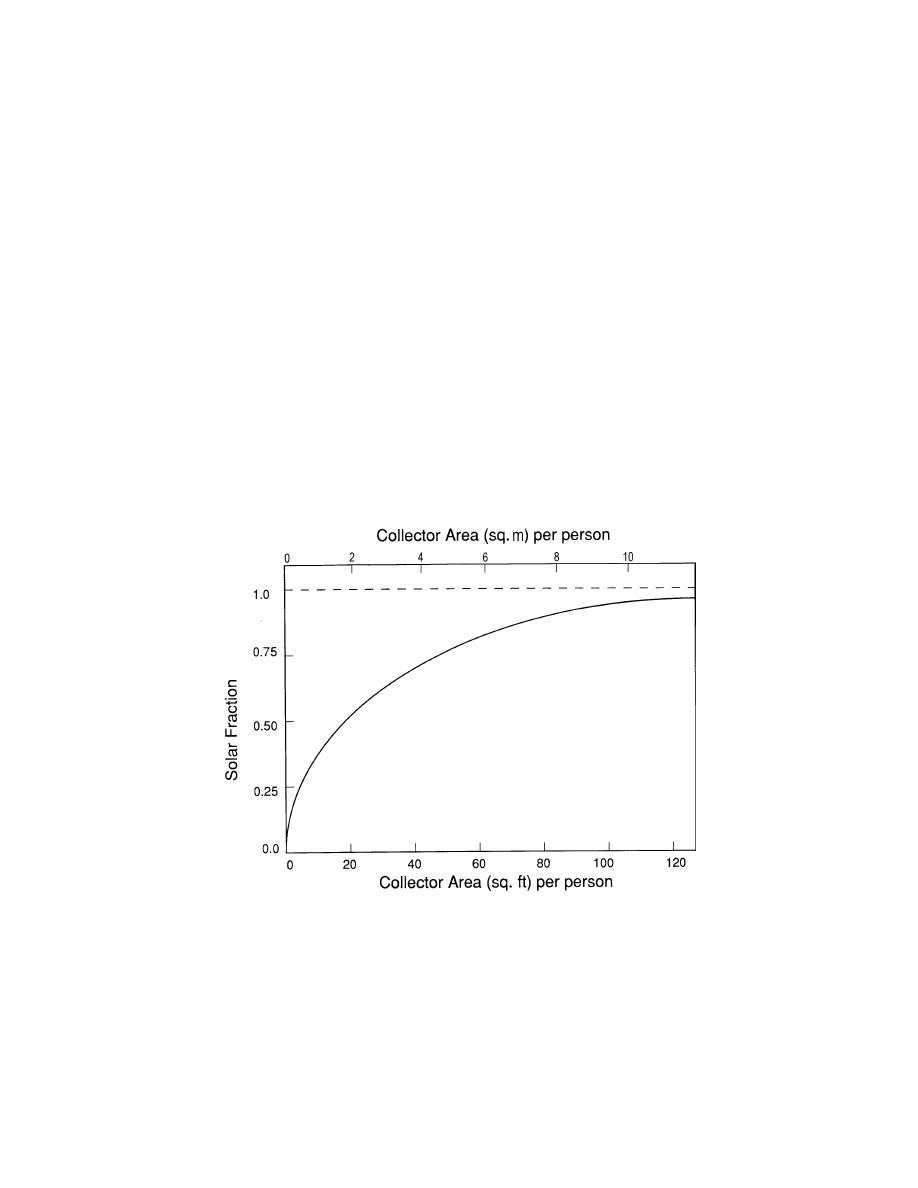
UFC 3-440-01
14 June 2002
auxiliary heat source. The use of built-in diagnostic devices helps prevent this condition
from occurring.
F-8. SOLAR ENERGY SYSTEM PERFORMANCE. To design a cost-effective solar
energy system, it is important to understand the difference between collector efficiency
and annual system performance. The solar fraction (SF) is the ratio of the energy
supplied by the solar system to the total energy required by the process. Figure F-4 is a
typical plot of solar fraction versus collector area. Note that, for small collector areas, a
relatively small increase in collector area leads to a steep increase in solar fraction. As
the collector area is increased, however, each additional square foot of collector area
yields a smaller increase in solar fraction, until the curve asymptotically approaches a
solar fraction of 100%. Another important parameter is the solar load ratio (SLR), which
is defined as the ratio of the annual (or monthly) radiation incident on the collector array
to the annual (or monthly) energy requirements of the building system. The selection of
the optimum collector area for a given building system is ultimately an economic
decision, as the cost of additional collector area and system capacity must be weighed
against the diminishing return in solar fraction gained.
Figure F-4. Solar Fraction Versus Collector Area
F-9.
SUMMARY
a. Service Water Heating. Experience, experimental simulations, and
economic analyses have shown that the most efficient use of solar energy in military
facilities is for loads that use low temperatures on a year-around basis, such as that
needed by service water heating. This application yields the best use of energy per
square foot of installed collector area and represents the greatest potential for cost-
effective solar energy use within the Services.
F-13


 Previous Page
Previous Page
